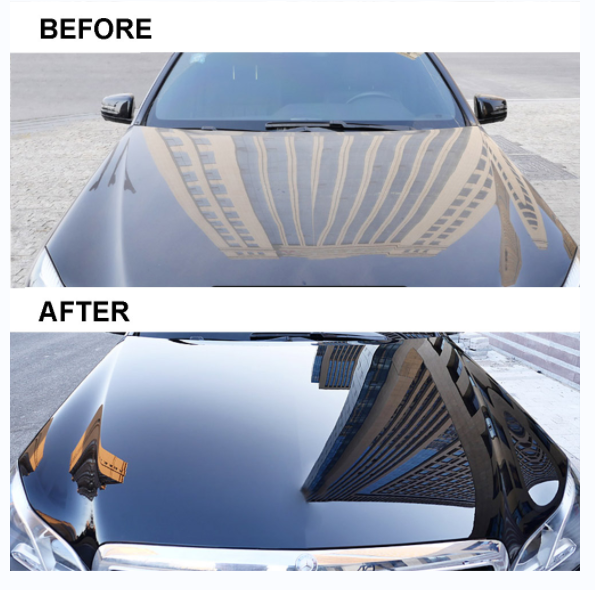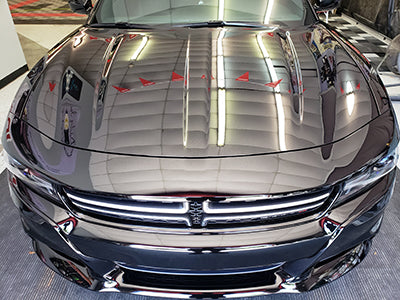Ceramic Coating: The Future of Automotive Surface Protection
Ceramic Coating: The Future of Automotive Surface Protection
Blog Article
Ceramic Finish vs. Standard Wax: Which Supplies Much Better Long-Term Protection?
The argument in between ceramic finishes and typical wax for car protection has actually garnered significant focus amongst automotive fanatics and experts alike. Ceramic coverings flaunt premium durability and resistance to ecological factors, yet the intricacy of their application raises inquiries concerning availability and usefulness.
Review of Ceramic Finishing
Ceramic layer has gained significant popularity among auto lovers and detailers alike because of its sophisticated safety high qualities. This cutting-edge innovation is made to develop a durable, hydrophobic shield over a car's paint surface, considerably boosting its resistance to environmental impurities such as dust, UV rays, and chemical discolorations. Unlike traditional wax, which provides a momentary layer of protection, ceramic finishes bond at a molecular degree with the paint, supplying resilient longevity-- typically extending beyond two years with correct upkeep.
The application process involves careful preparation of the automobile's surface, including cleaning and polishing to ensure optimum bond. As soon as applied, the layer cures to develop a durable layer that not only adds deepness and gloss to the paint but likewise simplifies maintenance. With its hydrophobic homes, ceramic finish enables water and dirt to move off more conveniently, reducing the regularity of laundries and reducing the risk of swirl marks.
Additionally, ceramic coatings are offered in different formulations, enabling customers to choose products tailored to their certain requirements and choices. Generally, ceramic finish stands for a considerable innovation in paint security modern technology, delivering remarkable performance contrasted to traditional choices.
Introduction of Standard Wax
Traditionally considered as a staple in vehicle care, wax acts as a preferred selection for those seeking an uncomplicated approach to boost and protect their vehicle's paint - ceramic coating. Automotive wax typically consists of natural active ingredients, such as carnauba, or artificial compounds, developed to produce a safety layer on the surface area of the paint. This layer not only boosts the automobile's gloss and beam but also offers a barrier against environmental pollutants
The application of wax is generally user-friendly, making it available for both specialists and do it yourself fanatics. It can be applied by hand or machine, enabling for versatility in the describing procedure. As soon as applied, wax calls for a curing duration, after which it solidifies to form a safety shell. Wax is likewise recognized for its capacity to drive away water, promoting a beading effect that assists in the prevention of water spots and corrosion.
Nonetheless, while wax is efficient for enhancing the aesthetic appeal of a car, it is very important to note that the security it offers might require more regular reapplication compared to alternate products, such as ceramic layers. Generally, conventional wax stays a preferred choice for those focusing on ease of use and instant visual improvement.
Toughness and Durability Contrast
While both ceramic finishes and traditional wax offer protective advantages for automotive paint, their sturdiness and longevity differ dramatically. Traditional wax, typically made from all-natural carnauba or synthetic polymers, typically provides a protective layer that lasts approximately 3 to 6 months. This reasonably brief life expectancy requires regular reapplication to maintain optimum security.
On the other hand, ceramic layers are crafted from sophisticated nanotechnology, creating a covalent bond with the paint surface area. This leads to a robust, hydrophobic layer that can withstand for two to 5 years, relying on the item and ecological problems. The superior toughness of ceramic finishes is connected to their chemical framework, which provides enhanced resistance to scratches, UV rays, and oxidation.

Security Versus Ecological Elements
Shielding an automobile's paint from ecological aspects is important for preserving its look and value in time. Automobiles are constantly revealed to a range of aspects, including UV rays, bird droppings, tree sap, acid rain, and roadway gunk, every one of which can compromise the stability of the paintwork.
Ceramic layers provide a robust protection versus these ecological assailants. Unlike conventional wax, which can degrade swiftly under UV direct exposure, ceramic finishings create a sturdy, hydrophobic layer that resists the hazardous results of sunlight and toxic wastes. This advanced modern technology develops a chemical bond with the car's surface, providing exceptional security that lasts for years, also in extreme conditions.
Traditional wax, while less complicated to apply, generally requires constant reapplication and provides restricted resistance to impurities and UV rays. In time, it can break down, leaving the paint at risk to scratches and oxidation. On the other hand, ceramic layers maintain their protective top qualities much longer, significantly reducing the threat of paint damages and making certain that the car preserves its aesthetic allure. As a result, ceramic finishings are increasingly recognized as the exceptional selection for lasting protection against environmental elements.
Application and Maintenance Differences
The approaches of application and succeeding upkeep for ceramic coverings and typical wax vary significantly, affecting the general user experience and effectiveness of each item. Ceramic layers need a more elaborate application procedure, commonly entailing surface prep work that consists of washing, sanitizing, and polishing the car. Once the surface area is all set, the ceramic finish is applied in a regulated setting, often needing specialist competence to make certain appropriate healing and bonding to the paint.

While both items improve car appearance, the longer-lasting protection provided by ceramic finishings might validate their preliminary financial investment, in spite of the even more demanding application procedure. Alternatively, traditional wax stays a prominent selection for those seeking a less complex, albeit short-term, option.

Conclusion
Finally, ceramic coverings show considerable benefits over standard wax in terms of longevity and environmental management. With a lifespan prolonging two to five years and remarkable resistance to UV rays, dust, and chemical spots, ceramic layers use a much more reliable service for long-lasting lorry upkeep. The application procedure may call for specialist know-how, the resulting cost financial savings and lowered frequency of reapplication underscore the value of ceramic coatings for those looking for ideal lorry security.
The debate in between ceramic layers and typical wax for lorry protection has gathered considerable attention amongst automotive fanatics and experts alike. Unlike typical wax, which offers a temporary layer of security, ceramic finishes bond at a molecular level with the paint, offering lasting resilience-- typically prolonging beyond 2 years with appropriate upkeep.
While both ceramic layers and standard wax deal safety advantages for vehicle paint, their sturdiness and longevity vary dramatically. For cars and truck fanatics looking for long-term defense, ceramic finishes present a compelling benefit over conventional wax visit the site products.
In conclusion, ceramic coatings demonstrate considerable benefits over traditional wax in terms of resilience and environmental defense.
Report this page